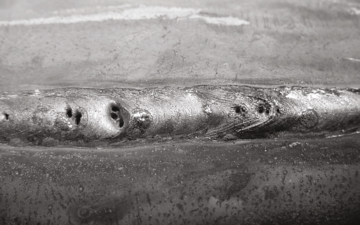Discover What is Porosity in Welding and Its Result on Structural Integrity
Discover What is Porosity in Welding and Its Result on Structural Integrity
Blog Article
Porosity in Welding: Identifying Common Issues and Implementing Ideal Practices for Prevention
Porosity in welding is a prevalent concern that commonly goes unnoticed up until it creates considerable troubles with the integrity of welds. In this discussion, we will explore the crucial elements adding to porosity development, analyze its destructive effects on weld performance, and talk about the ideal techniques that can be adopted to reduce porosity incident in welding processes.
Usual Causes of Porosity

Using filthy or wet filler materials can present contaminations into the weld, adding to porosity problems. To mitigate these typical reasons of porosity, thorough cleaning of base steels, appropriate securing gas option, and adherence to ideal welding specifications are important techniques in attaining high-quality, porosity-free welds.
Effect of Porosity on Weld Top Quality

The presence of porosity in welding can significantly jeopardize the architectural integrity and mechanical residential or commercial properties of bonded joints. Porosity develops spaces within the weld steel, compromising its total toughness and load-bearing ability.
Among the main effects of porosity is a decline in the weld's ductility and toughness. Welds with high porosity levels have a tendency to exhibit lower influence stamina and lowered capability to flaw plastically prior to fracturing. This can be specifically concerning in applications where the bonded elements undergo vibrant or cyclic loading conditions. Moreover, porosity can impede the weld's capacity to properly transmit forces, resulting in premature weld failing and prospective safety threats in important structures.
Ideal Practices for Porosity Prevention
To boost the structural integrity and top quality of bonded joints, what certain measures can be implemented to lessen the event of porosity throughout the welding process? Porosity avoidance in welding is crucial to guarantee the honesty and stamina of the final weld. One effective practice is appropriate cleansing of the base steel, eliminating any pollutants such as rust, oil, paint, or wetness that can result in gas entrapment. Making certain that the welding tools remains in excellent problem, with clean consumables pop over here and appropriate gas flow rates, can likewise considerably lower porosity. In addition, keeping a steady arc and managing the welding specifications, such as voltage, existing, and take a trip rate, aids develop a regular weld pool that lessens the threat of gas entrapment. Making use of the right welding technique for the certain product being bonded, such as changing the welding angle and weapon setting, can better stop porosity. Regular evaluation of welds and instant removal of any type of concerns recognized throughout the welding procedure are crucial practices to stop porosity and produce top notch welds.
Relevance of Correct Welding Strategies
Carrying out correct welding methods is vital in ensuring the structural integrity and top quality of bonded joints, building on the foundation of efficient porosity prevention actions. Welding methods directly influence the total stamina and longevity of the welded framework. One key aspect of proper welding methods is keeping the appropriate heat input. Extreme warm can lead to boosted porosity because of the entrapment of gases in the weld swimming pool. Alternatively, insufficient warmth may lead to insufficient blend, producing potential powerlessness in the joint. Additionally, utilizing the proper welding criteria, such as voltage, existing, and travel speed, is vital for attaining audio welds with very little porosity. you can look here
Furthermore, the option of welding procedure, whether it be MIG, TIG, or stick welding, should align with the certain needs of the project to guarantee optimum outcomes. Proper cleaning and prep work of the base steel, in addition to choosing the appropriate filler product, are also necessary elements of proficient welding strategies. By adhering to these best practices, welders can decrease the danger of porosity development and generate top notch, structurally audio welds.

Testing and High Quality Control Actions
Quality control actions play a vital role in validating the integrity and dependability of bonded joints. Testing treatments are essential to detect and stop porosity in welding, guaranteeing the toughness and durability of the end product. Non-destructive testing methods such as ultrasonic screening, you can try these out radiographic testing, and visual inspection are frequently employed to determine possible problems like porosity. These strategies enable for the assessment of weld high quality without endangering the honesty of the joint. What is Porosity.
Post-weld assessments, on the various other hand, assess the last weld for any issues, including porosity, and confirm that it satisfies defined requirements. Implementing a detailed quality control strategy that consists of thorough screening procedures and examinations is extremely important to decreasing porosity problems and ensuring the overall high quality of bonded joints.
Conclusion
Finally, porosity in welding can be an usual issue that impacts the quality of welds. By identifying the common reasons for porosity and carrying out best methods for avoidance, such as proper welding strategies and screening steps, welders can ensure top quality and dependable welds. It is essential to focus on prevention approaches to lessen the incident of porosity and maintain the integrity of bonded frameworks.
Report this page